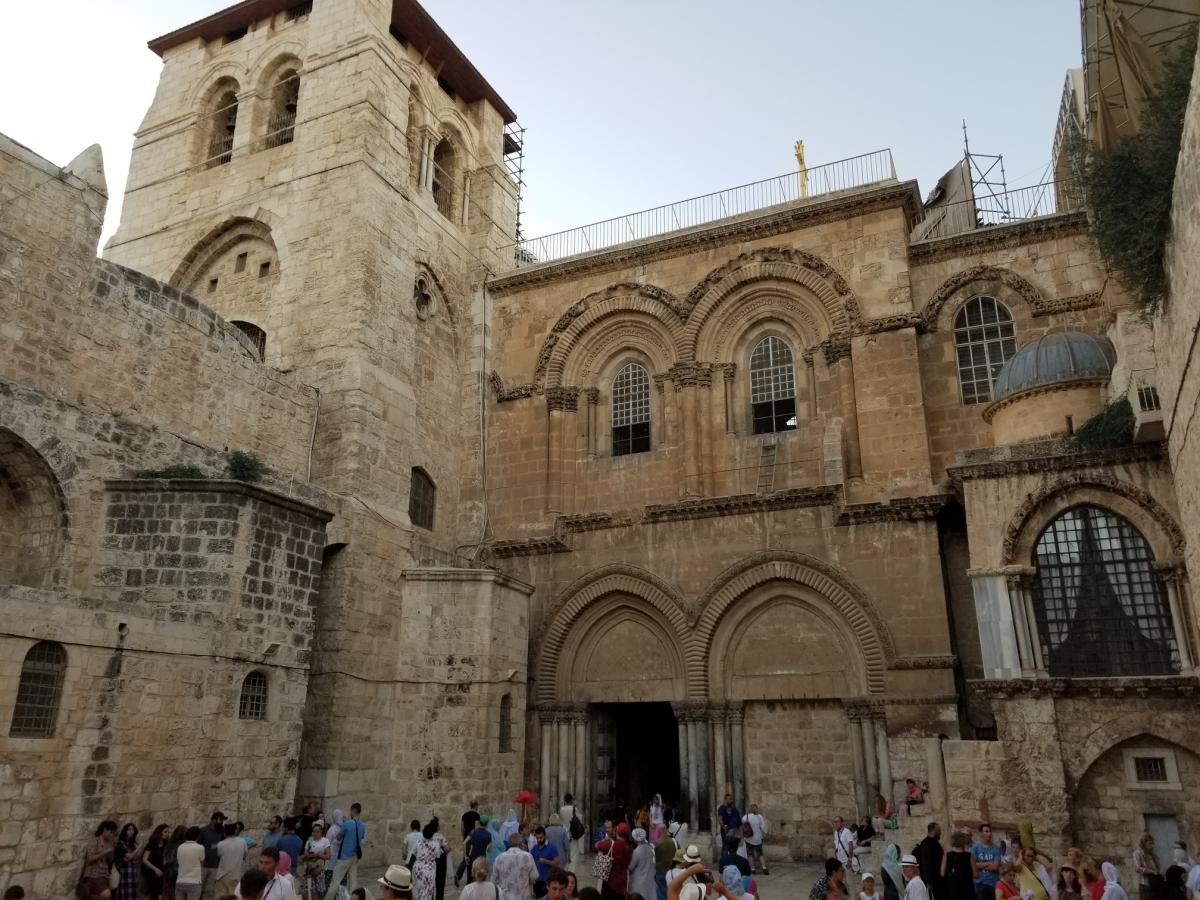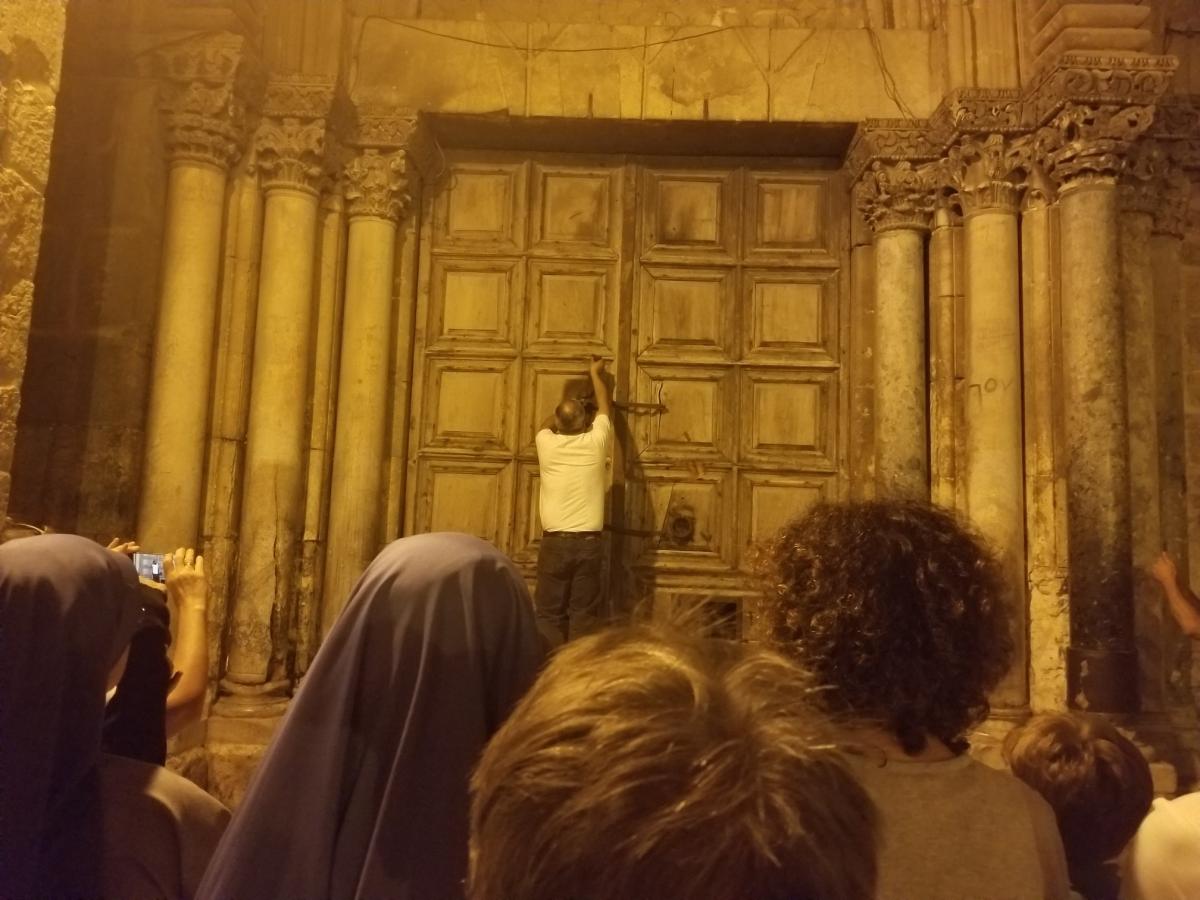2018 Travel Grant Winner Isaiah Seibert on His Travels in the Middle East
Isaiah Seibert
For “The Middle Ages in the Middle East: Muslim, Jewish, and Christian sites in Israel, Egypt, and the West Bank”
Isaiah took a two-week independent trip around Israel, Egypt, and the West Bank.
On Friday nights in Jerusalem’s Old City, the plaza in front of the Western Wall fills with people who celebrating the start of Shabbat or watch the festivities. But while one of the holiest sites in Judaism is full of people, the most holy site to Christians is all but empty. Only a handful of tourists and pilgrims are milling inside and around the plaza of the Church of the Holy Sepulchre, the place where, according to the Christian tradition, Jesus of Nazareth was crucified, died, and was buried. Some are probably there to avoid the long lines that plague the church throughout most of the day, upwards of an hour and half to enter the Aedicule, its holiest spot.

But the rest are there to observe a daily ritual that, although the written record only traces back to Ottoman times, allegedly goes back much further to the time of Saladin.
It’s 8:30 p.m., and a bell rings. The people inside the church are ushered outside. A few minutes later, the bell rings once more and the last of the stragglers slowly trickle out. Then, just as the church is closing, the quiet plaza in front of the church sees a shuffle. Pilgrims, tourists, and women religious all solemnly rush to the main doors of the church.
A man, who just finished taking selfies with three younger tourists, descends from the steps to the right of the main doors and brings over a ladder. Tourists get out their phones. The man climbs the ladder, locks the door in two places, then immediately kicks everyone out of the square.

It was a pretty anticlimactic moment. But it’s one that attracts a small crowd twice a day, morning and night. It’s also recently caught the attention of international media, who have written story after story after story of the man and his family.
So, what’s all the hubbub? Even though I decided it was a must-see during my trip, I’m still not entirely sure why. I heard about it from a tour guide, and given that many museums and tourist spots are closed by then, figured seeing it for myself would be a good way to fill an evening.
The gist of the story is that two Muslim families hold the keys to the holiest church in Christianity. There’s documents tracing it back to the fifteenth or sixteenth century, but local traditions assert it goes back much further to a point in the Middle Ages where two squabbling church factions went to a Muslim judge to decide who should be in possession of the keys. The judge then allegedly took the keys from both of them and gave them to two Muslim families for safe-keeping, the same two Muslim families who hold them to this day.
Perhaps the longevity of the ritual is what attract people to it. It’s hard to find a place where the same thing happens twice a day every day for hundreds of years. But what struck me most about the story is how layers and layers of history find themselves stacked upon one another in sometimes strange formations. Here, in a city holy to three of the world’s largest religions, a Muslim family holds the keys to a Christian church that was first built by St. Helen in the fourth century on top of a Roman temple and rebuilt by the Crusaders.
And the church continues to make history! Earlier this year, Christian leaders closed it to protest a “Jewish statehood” bill making its way through the Knesset.
Many of the places I visited show the intertwining of all these different threads of history I studied in my coursework, both as a Theology and Global Medieval Studies student, and in my first few semesters as an International Politics student. The alleged baptismal site in the Jordan River, for example, is now an international border with soldiers and mines around. (The riverbed is much drier because of climate change). The city of Jericho, perhaps most well-known for events in the Book of Joshua, is also one of the oldest, continuously-inhabited cities on the planet, a major center of power in the Middle Ages, and an important agricultural center in the West Bank today.
All of this is a visceral reminder that the past still looms behind the present, that the history that seems so distant in time and place is much closer to us than maybe we would like to believe. This observation is obvious on an intellectual level, but by seeing it in person, it’s possible to experience.
Images: the Holy Sepulchre; the man locking its doors (credit Isaiah Seibert)